What are the indicators?
In the process of business development, a lot of business data will be generated inside and outside the enterprise. After collecting, calculating, storing and analyzing these data, the statistical results formed are called indicators . Simply put, indicators are quantitative characteristics formed after business is broken down and quantified. Enterprises use data indicators to accurately monitor the business and achieve scientific management and effective optimization of the business.
During our in-depth research on a number of companies, we found that data indicators are the core element of data management. For many students engaged in data work, they face various challenges and problems in actual operations.
Business demands, the real users of indicators. In actual situations, most business personnel often feel at a loss when faced with various complex indicators. Not only do they find it difficult to effectively use these indicators, they also believe that the existing indicator system fails to fully demonstrate its value. Moreover, the key indicators they urgently need are often nowhere to be found, nor can they find an entrance to raise their needs.
Management appeal, data management department. The lack of a complete indicator life cycle management system makes it difficult to effectively guarantee the authority control and quality management of indicators. At the same time, the problem of indicator duplication has never been solved.
Development appeals, indicator developers. The design of the indicator model cannot form constraints, leading to confusion in model construction. After generating new indicators, due to the lack of standardized trial calculation verification links , the accuracy of the calculation results of each indicator cannot be effectively ensured. At the same time, after the indicator is developed, it cannot be linked with the quality verification task, resulting in data quality that cannot be guaranteed.
Indicators belong to the main demand, the indicator initiator, and the department responsible for the indicator requirements. In actual work, faced with a large number of indicator requirements, it is difficult to accurately evaluate the priority of each indicator; some indicator definitions lack the support of standards, resulting in ambiguity in indicator definitions. Moreover, it lacks the ability to generate indicators to define lineage tracing , which makes it difficult to troubleshoot quality problems and the specific causes cannot be quickly found.
Metric management solution
Focusing on the pain points of indicator management, relying on the Kangaroo Cloud indicator management DataIndex platform and combining enterprise process systems, we provide productized solutions to complete the construction of the indicator system, making indicator construction and indicator reuse more standardized and efficient.
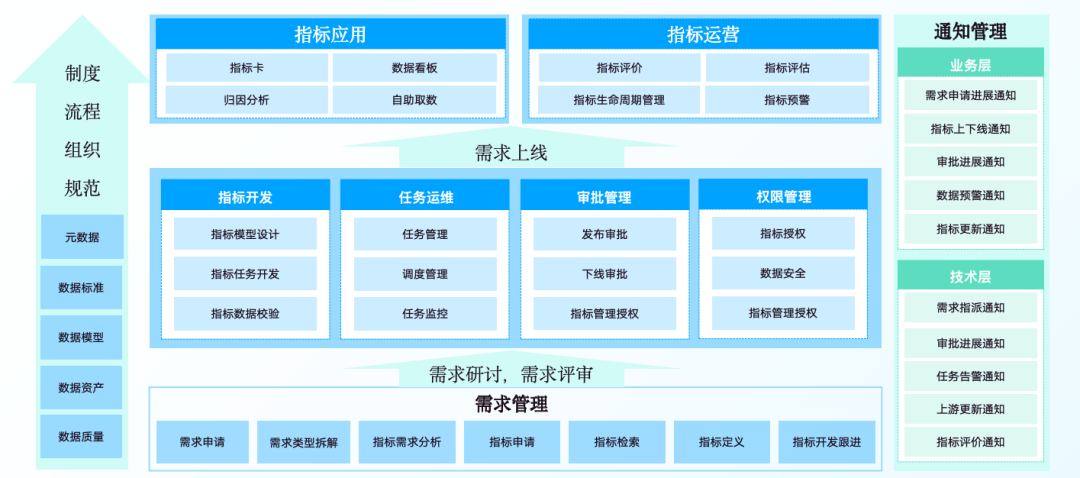
The main processes of the indicator solution include:
The first step is to start from the perspective of indicator requirements. Analyze and identify whether there are similar existing indicators, accurately define the definition and caliber of new indicators based on the similarity information of relevant indicators, and clarify the hierarchical structure of indicator construction on this basis. The key lies in the early design stage, which requires a comprehensive and orderly planning and layout of the indicator construction.
The second step is to implement the construction of indicators specifically. Carry out indicator development work based on previously clear indicator definitions, covering but not limited to the design and construction of indicator models , specific task execution of indicator development, and rational management of task scheduling.
The third step is to put the developed indicators online. Carry out a strict release approval process, allocate permissions and use authorization management for indicator applications, and cover practical content related to indicator management and security assurance to ensure the safe and effective operation of online indicators.
The fourth step is the practical application of indicators. Use data indicators through different data application forms, including data dashboards, self-service data collection, attribution analysis , etc.
The fifth step is to evaluate the usage of indicators. Complete the complete closed loop from indicator generation to offline.
Indicator construction implementation steps
Now that the theory is clear, the specifics still have to be put into practice.
Build a platform
In traditional indicator management scenarios, most indicator data are scattered across various platforms, some in reporting platforms, and some in business systems or external business applications. Generally, the metadata management of these indicators relies on discrete file methods such as Excel, which results in a lack of information on the metadata management of indicators, leading to repeated development of indicators, ambiguity and other issues.
Therefore, the first step for improvement is to abandon this Excel management model and adopt a unified indicator management platform to achieve integrated storage and standardized management of indicators and their metadata.
Analysis platform capabilities
On the basis of fully understanding the current indicator management problems faced by customers, we build a full-process indicator management solution that adapts to customer business needs , thereby effectively and efficiently solving various complex challenges encountered by customers in indicator management.
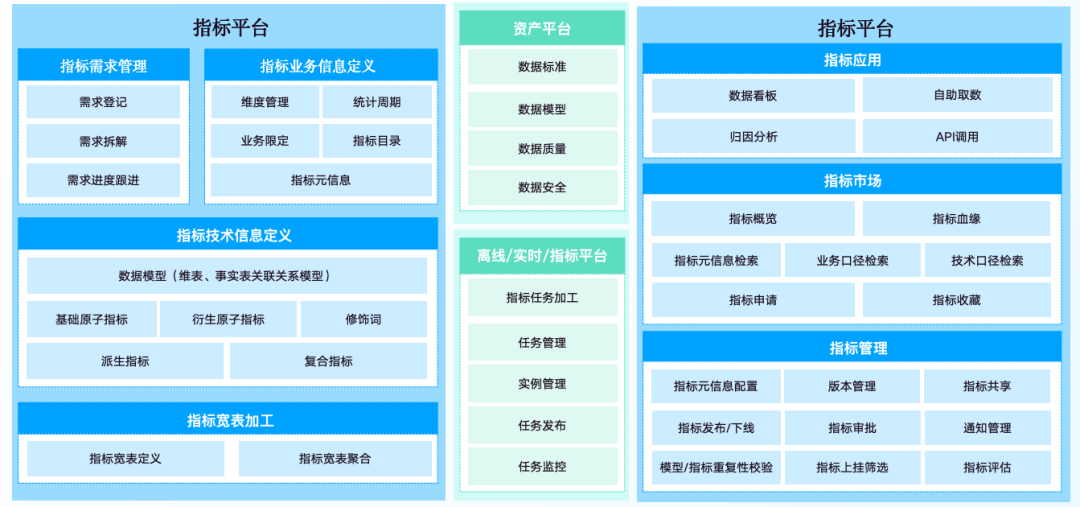
· Indicator demand management: mainly solves problems at the demand management level, ensuring that every demand can be responded to in a timely manner, and that the demand can be reasonably decomposed and detailed.
· Indicator definition: In actual business scenarios, a large amount of key information is usually stored in Excel tables. In order to achieve unified management of indicators, these existing indicators can be imported one by one through the indicator registration function and registered and managed. For newly added indicators, directly use the indicator definition function to standardize their metadata, thereby ensuring that all indicators can be effectively managed and maintained on a centralized platform.
· Indicator development: Kangaroo Cloud Indicator Management Platform supports two flexible and diverse development modes. Whether by writing SQL scripts or using visual interfaces , indicator development tasks can be successfully completed.
· Indicator management: After completing indicator development, with the help of the platform's built-in indicator publishing function , developers can select the appropriate sharing level according to needs and formally publish indicators through different levels of approval processes. In addition, the Kangaroo Cloud Indicator Management Platform is also equipped with an indicator evaluation and evaluation mechanism , allowing indicator users to provide feedback and evaluation on indicators after they are released, thus realizing full-process management from development, release to usage feedback.
· Indicator Market: When an indicator is successfully released to the indicator market , those who use the indicator can make full use of the powerful search function provided by the platform. This function has a variety of built-in search logic, allowing users to locate and obtain what they need more conveniently and efficiently. index.
· Indicator application: The Kangaroo Cloud indicator platform supports a variety of data application forms, including self-service data retrieval, API interface calls, data visualization boards , indicator cards and other functions to meet users' indicator application needs in different scenarios.
Integrated design of indicator management process and platform
The indicator management process is mainly coordinated by four major departments (indicator owner department, big data center, data management center, business department), and integrates the use of multiple platform capabilities such as indicator management platform, offline development platform, real-time development platform, and data asset platform. , thereby completing the overall construction of the indicator. The specific design process is shown in the figure below:
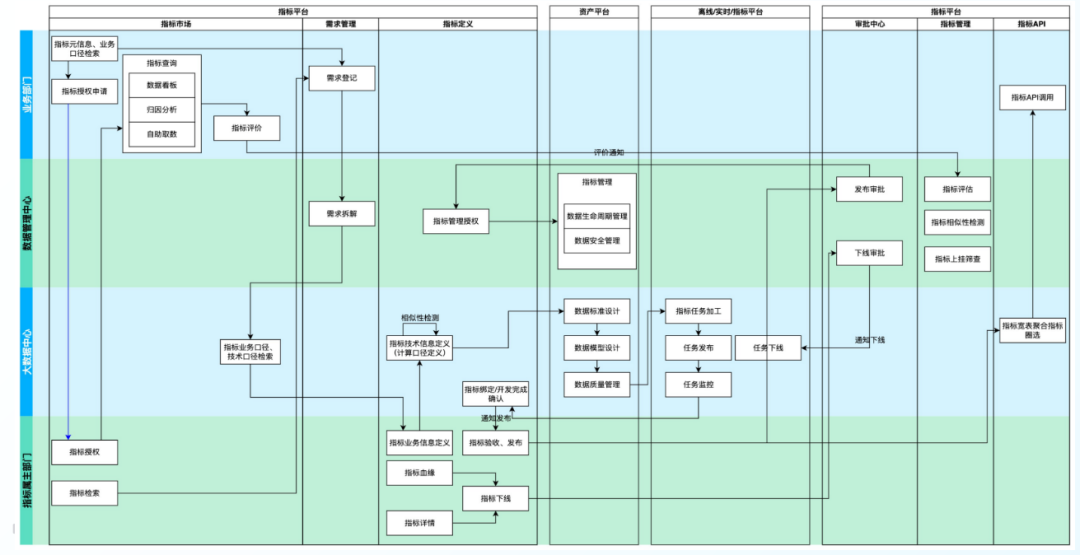
Complete the construction of indicator management plan
Building a comprehensive indicator management solution mainly includes four key steps as shown in the figure below. These four steps are interlocking, covering the entire life cycle of the indicator from the initial identification of business needs to the final indicator offline. Aiming to achieve refined full life cycle management.
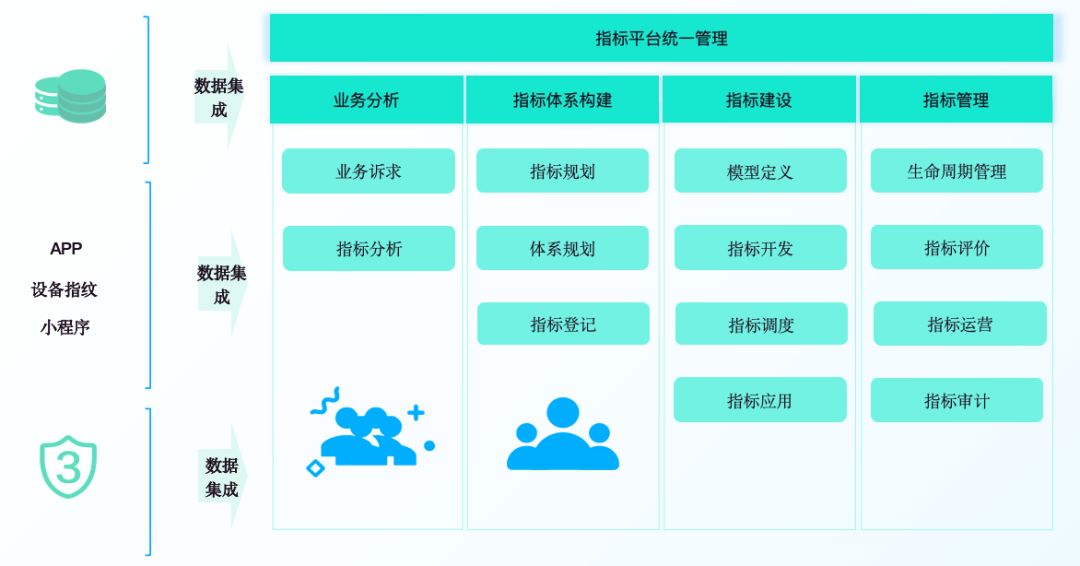
· Business requirements: Indicator data review
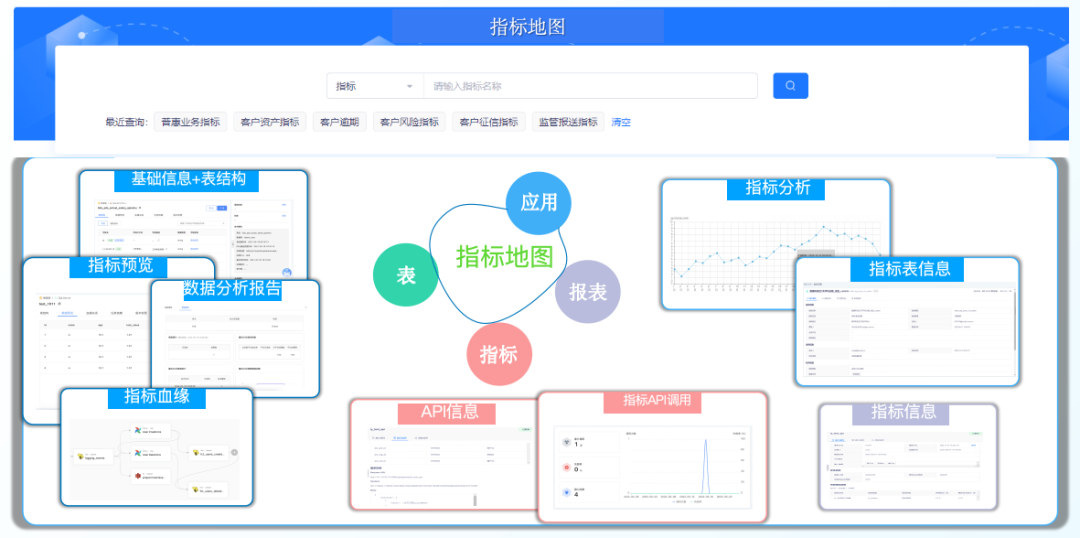
·Indicator analysis: View and analyze business indicators
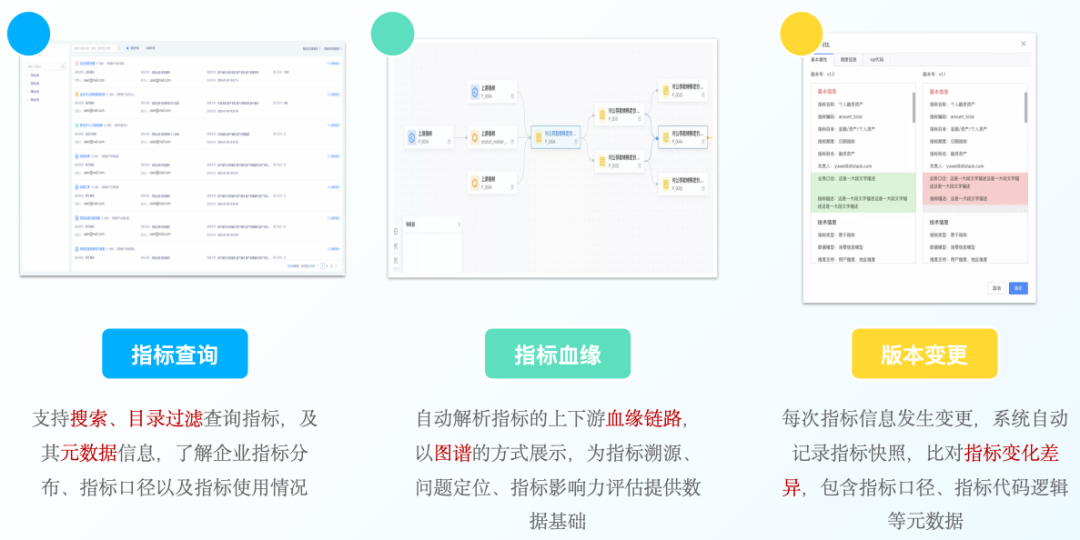
·Indicator planning: application indicator system planning
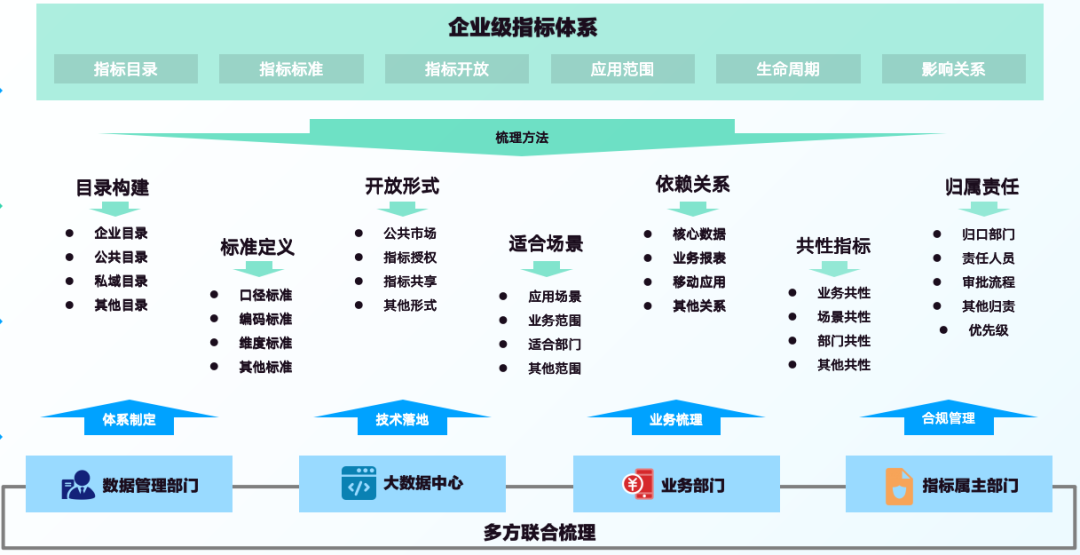
·Indicator registration: indicator demand registration
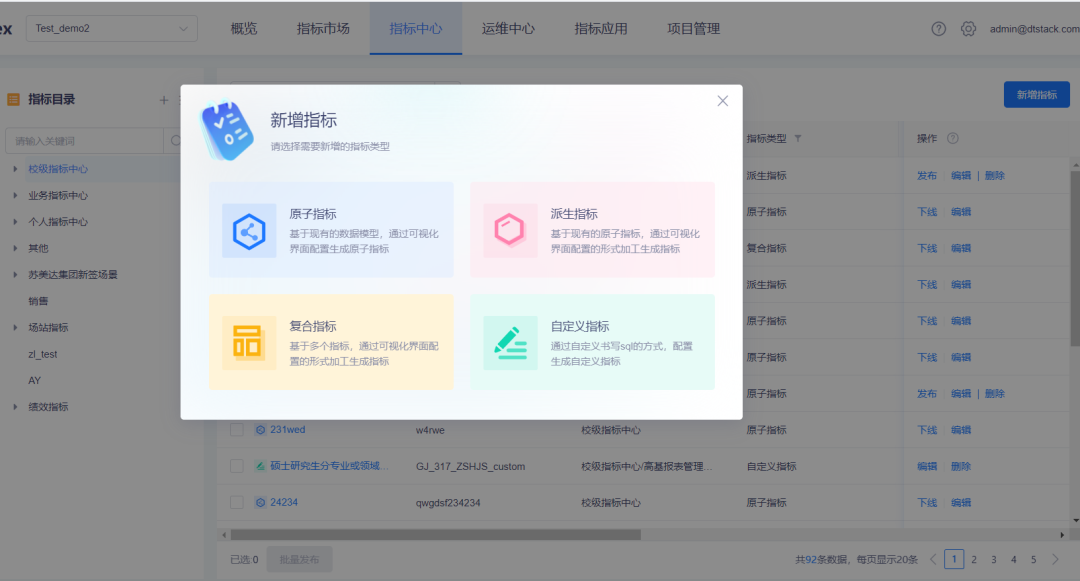
· Model definition: Create a new data model
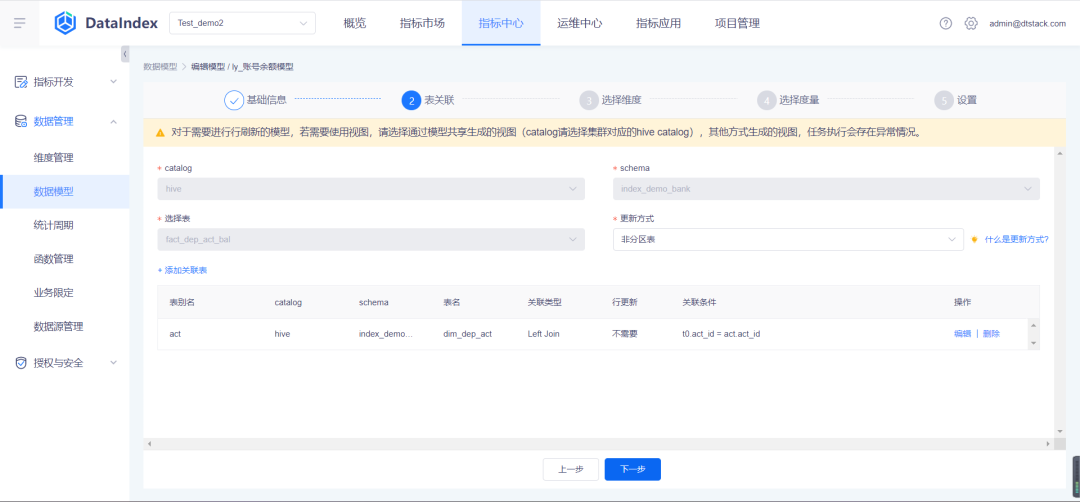
· Indicator operation: assisting indicator management based on the indicator evaluation system
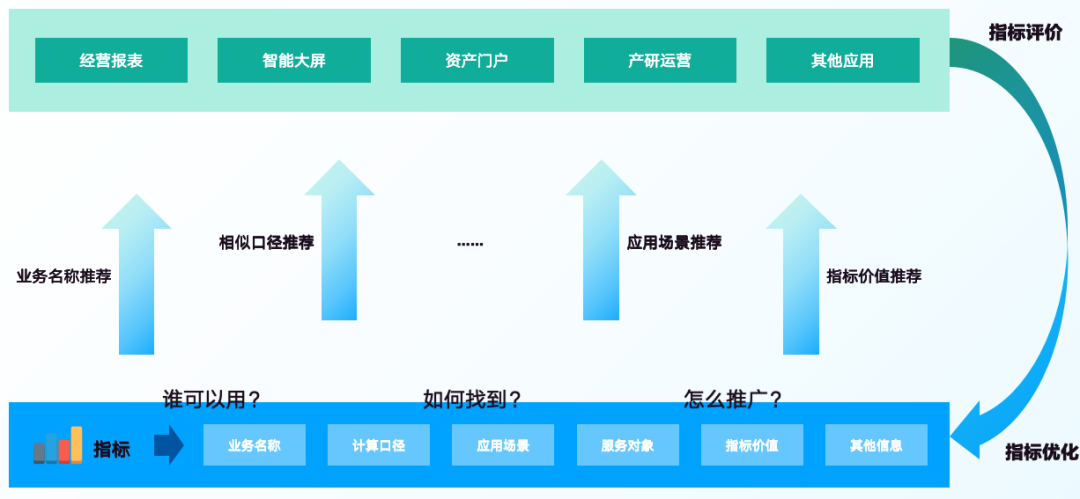
· Indicator audit: How to ensure data security during indicator application
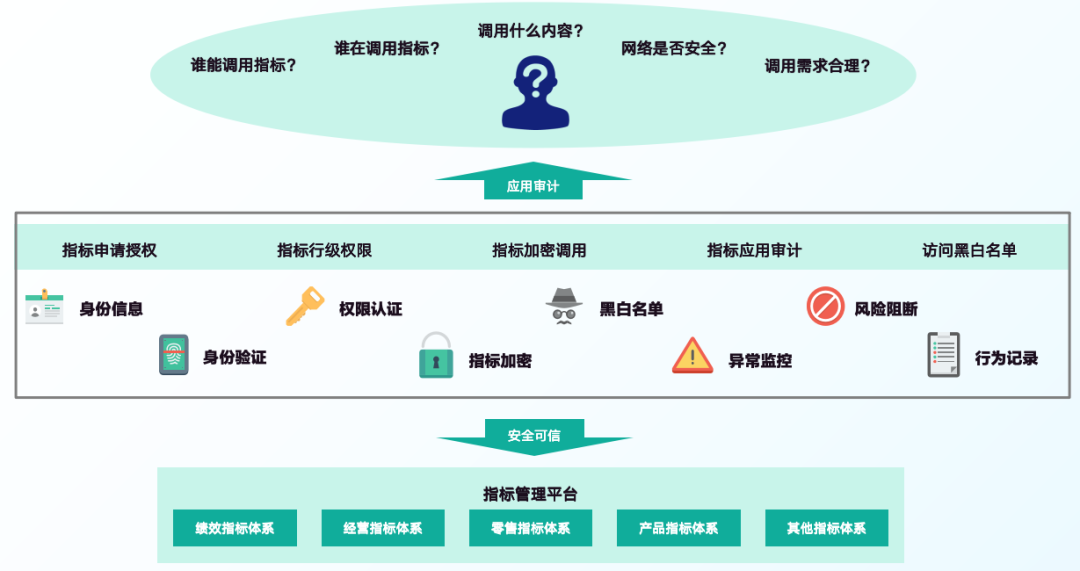
Summarize
Without unified management of indicators, indicators will always be confusing. Standardization of indicators will also affect the timeliness of data analysis to a large extent. Based on this, the indicator platform came into being.
Kangaroo Cloud Indicator Management Platform is an indicator system construction and self-service data retrieval platform. Through standardized definition and standardized development of indicators, it builds an enterprise data indicator system and implements indicator data results. It also provides self-service quick query of indicators, report production, and data elimination. ambiguity, reducing communication costs between business and technology, and making indicator data visible, available, and manageable.
"Dutstack Product White Paper" download address: https://www.dtstack.com/resources/1004?src=szsm
"Data Governance Industry Practice White Paper" download address: https://www.dtstack.com/resources/1001?src=szsm
For those who want to know or consult more about big data products, industry solutions, and customer cases, visit the Kangaroo Cloud official website: https://www.dtstack.com/?src=szkyzg
Linus took it upon himself to prevent kernel developers from replacing tabs with spaces. His father is one of the few leaders who can write code, his second son is the director of the open source technology department, and his youngest son is an open source core contributor. Robin Li: Natural language will become a new universal programming language. The open source model will fall further and further behind Huawei: It will take 1 year to fully migrate 5,000 commonly used mobile applications to Hongmeng. Java is the language most prone to third-party vulnerabilities. Rich text editor Quill 2.0 has been released with features, reliability and developers. The experience has been greatly improved. Ma Huateng and Zhou Hongyi shook hands to "eliminate grudges." Meta Llama 3 is officially released. Although the open source of Laoxiangji is not the code, the reasons behind it are very heart-warming. Google announced a large-scale restructuring